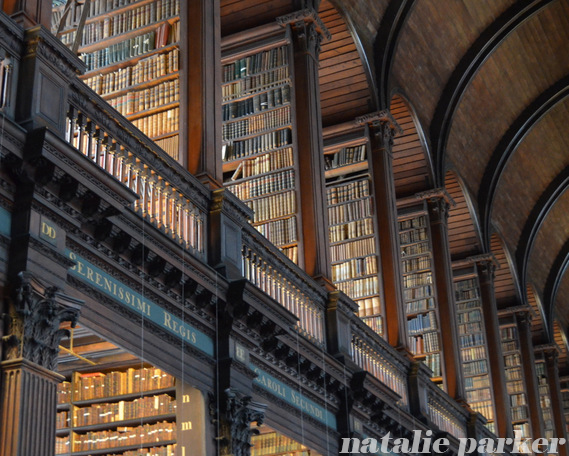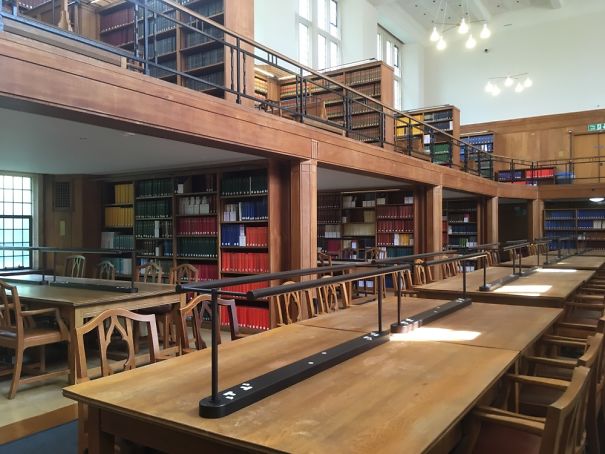http://www.ancient-origins.net/ancient-places-europe/fairy-tale-village-alberobello-and-its-picturesque-trulli-houses-009714

What is a Trullo?
Around the middle of the 14th century AD, the area was given by Robert II, the Prince of Taranto, to the Count of Conversano, as a reward for his contributions during the Crusades. The earliest trulli in Alberobello are reckoned to date to this period of the town’s history. In essence, a trullo is a building of corbelled dry-stone construction. In other words, such structures are constructed without the use of mortar or cement. This traditional building method is thought to have originated in prehistoric times and is still in use even today.
The trulli of Alberobello may be divided into two different parts. The first part of these structures is the whitewashed walls, which are rectangular and built directly into the limestone bedrock. These walls are constructed using the dry-stone wall technique and consist of two faces (one on the exterior, and the other on the interior of the structure) with a core of rubble. These limestone walls are punctured by a doorway and small windows, and an internal fireplace and alcoves may be built into them.

Model of a trulli. (Marcok/CC BY SA 3.0)
The second part, which makes the trulli such iconic structures, is the conical (some of these may be either dome or pyramidal in shape) corbelled roofs. Like the walls below them, the roofs of the trulli are also constructed without the use of either cement or mortar and comprise of two layers. The inner layer is formed of wedge-shaped stones arranged in a dome shape and capped with a closing stone.
The outer layer, on the other hand, is watertight, and made using corbelled limestone slabs known as chianche or chiancarelle. By utilizing an architectural feature known as a squinch (also called a corner arch), the trulli are able to transit directly from rectangular walls to conical roofs. Many of these roofs bear religious or mythological markings in white ash and are topped with a decorative pinnacle. These are believed to serve an apotropaic function and meant to ward off evil.



What is a Trullo?
Around the middle of the 14th century AD, the area was given by Robert II, the Prince of Taranto, to the Count of Conversano, as a reward for his contributions during the Crusades. The earliest trulli in Alberobello are reckoned to date to this period of the town’s history. In essence, a trullo is a building of corbelled dry-stone construction. In other words, such structures are constructed without the use of mortar or cement. This traditional building method is thought to have originated in prehistoric times and is still in use even today.
The trulli of Alberobello may be divided into two different parts. The first part of these structures is the whitewashed walls, which are rectangular and built directly into the limestone bedrock. These walls are constructed using the dry-stone wall technique and consist of two faces (one on the exterior, and the other on the interior of the structure) with a core of rubble. These limestone walls are punctured by a doorway and small windows, and an internal fireplace and alcoves may be built into them.

Model of a trulli. (Marcok/CC BY SA 3.0)
The second part, which makes the trulli such iconic structures, is the conical (some of these may be either dome or pyramidal in shape) corbelled roofs. Like the walls below them, the roofs of the trulli are also constructed without the use of either cement or mortar and comprise of two layers. The inner layer is formed of wedge-shaped stones arranged in a dome shape and capped with a closing stone.
The outer layer, on the other hand, is watertight, and made using corbelled limestone slabs known as chianche or chiancarelle. By utilizing an architectural feature known as a squinch (also called a corner arch), the trulli are able to transit directly from rectangular walls to conical roofs. Many of these roofs bear religious or mythological markings in white ash and are topped with a decorative pinnacle. These are believed to serve an apotropaic function and meant to ward off evil.


Remodeling
Feb. 27th, 2018 02:21 pmStairway to Heaven
https://www.hometalk.com/3770512/stairway-to-heaven?se=fol_new-20180226-1&date=20180226&tk=2tnxq1&slg=b7d48cfdfba769ea94068928a81880a8-15526286&post_position=3
Minneapolis, MN
In order to put an official end to our 18-month-long kitchen remodel, I had only one project left to complete: refinish the stairs. They had to be pretty enough to deserve a place in the sparkly new kitchen. I'd say I accomplished that.
 ( Read more... )
( Read more... )



https://www.hometalk.com/3770512/stairway-to-heaven?se=fol_new-20180226-1&date=20180226&tk=2tnxq1&slg=b7d48cfdfba769ea94068928a81880a8-15526286&post_position=3
Minneapolis, MN
In order to put an official end to our 18-month-long kitchen remodel, I had only one project left to complete: refinish the stairs. They had to be pretty enough to deserve a place in the sparkly new kitchen. I'd say I accomplished that.
 ( Read more... )
( Read more... )


Ever feel like somone's watching you
Feb. 23rd, 2018 01:33 pm
Google Earth managed to catch this massive fire at an old college on its camera, too.
Above, the view from the ground; below, the Google Earth view. Crazy how well the flames and smoke showed up, isn't it?
http://diply.com/dark-dreadful-google-earth/2?utm_source=facebook&utm_medium=collie

The way the cliffs along this stretch of coastline are shaded make it look like the ocean is about to come pouring onto land.
http://diply.com/dark-dreadful-google-earth/6?utm_source=facebook&utm_medium=collie
This aerial view of a dock sure looks sinister.
Could be a crime scene right out of Law & Order, amirite? It's easy to see how folks might think someone was caught dumping a body, but the clues don't add up — these coordinates are for a public park in the Netherlands, where zero people would ever dump a body in broad daylight.

Finding the Beauty in Nordic Ruins
Feb. 9th, 2018 01:08 pmhttps://www.atlasobscura.com/articles/abandoned-nordic-ruins-winter?utm_source=Atlas+Obscura+Daily+Newsletter&utm_campaign=935fb5e219-EMAIL_CAMPAIGN_2018_02_09&utm_medium=email&utm_term=0_f36db9c480-935fb5e219-63124913&ct=t()&mc_cid=935fb5e219&mc_eid=dbc2f66964

A railway tunnel, Finland. ALL PHOTOS: ABANDONED NORDIC

An abandoned Manor House in Estonia.

A radio station, Estonia.
The Afterlives of Lighthouses

The Old Harbor Light in Savannah, Georgia, was first erected in 1858 before being moved to Emmett Park in 2001. JAMES HILL/ COURTESY RIZZOLI BOOKS

A railway tunnel, Finland. ALL PHOTOS: ABANDONED NORDIC

An abandoned Manor House in Estonia.

A radio station, Estonia.
The Afterlives of Lighthouses

The Old Harbor Light in Savannah, Georgia, was first erected in 1858 before being moved to Emmett Park in 2001. JAMES HILL/ COURTESY RIZZOLI BOOKS
Very large scenic Cave -- Meep prompt
Aug. 14th, 2017 08:41 pmHidden Underground Cave In Vietnam Turns Out To Be A Portal To A Whole New World
http://thenativepeople.net/2017/08/08/hidden-underground-cave-vietnam-turns-portal-whole-new-world/

( Read more... )
http://thenativepeople.net/2017/08/08/hidden-underground-cave-vietnam-turns-portal-whole-new-world/

( Read more... )
Prompts - scenic
Feb. 10th, 2017 09:38 pm
2012 Annular eclipse over New Mexico (Image: Kevin Baird)
http://gizmodo.com/how-to-watch-the-ring-of-fire-solar-eclipse-1785969331
There's supposed to be another this August that will be seen across the U.S.

Lake Michigan 2017 ----David Ison
https://www.facebook.com/photo.php?fbid=10212360538193660&set=a.3680921866749.2166797.1386134387&type=3&theater
Cat Prompts
Feb. 7th, 2017 10:53 pmhttp://pawsome.topix.com/slideshow/17734





Hello, Police? I accidentally stepped on my cat's foot and need to be arrested'





Hello, Police? I accidentally stepped on my cat's foot and need to be arrested'
http://www.atlasobscura.com/articles/holloways-roads-tunneled-into-the-earth-by-time?utm_source=facebook.com&utm_medium=atlas-page
Holloways: Roads Tunneled into the Earth by Time
By Allison Meier
 Sunken lane in Normandy, France (photograph by Jean-François Gornet/Flickr)
Sunken lane in Normandy, France (photograph by Jean-François Gornet/Flickr)
Appearing like trenches dragged into the earth, sunken lanes, also called hollow-ways or holloways, are centuries-old thoroughfares worn down by the traffic of time. They’re one of the few examples of human-made infrastructure still serving its original purpose, although many who walk through holloways don’t realize they’re retracing ancient steps.

Sunken lane in La Meauffe, France, site of a 1944 World War II battle (photograph by Romain Bréget/Wikimedia)
The name “holloway” is derived from “hola weg,” meaning sunken road in Old English. You’re most likely to discover a holloway where the ground and the stone below are soft, such as places rich in sandstone or chalk. No one ever engineered a holloway — erosion by human feet, and horses or cattle driven alongside, combined with water then flowing through the embankments like a gully, molded the land into a tunneled road. It’s hard to date them, but most are thought to go back to Roman times and the Iron Age, although in the Middle East some are believed to stretch back to ancient Mesopotamia. They even have their own ecology, such as the spreading bellflowers that enjoy the disturbed earth.
( Read more... )
Holloways: Roads Tunneled into the Earth by Time
By Allison Meier
 Sunken lane in Normandy, France (photograph by Jean-François Gornet/Flickr)
Sunken lane in Normandy, France (photograph by Jean-François Gornet/Flickr)Appearing like trenches dragged into the earth, sunken lanes, also called hollow-ways or holloways, are centuries-old thoroughfares worn down by the traffic of time. They’re one of the few examples of human-made infrastructure still serving its original purpose, although many who walk through holloways don’t realize they’re retracing ancient steps.

Sunken lane in La Meauffe, France, site of a 1944 World War II battle (photograph by Romain Bréget/Wikimedia)
The name “holloway” is derived from “hola weg,” meaning sunken road in Old English. You’re most likely to discover a holloway where the ground and the stone below are soft, such as places rich in sandstone or chalk. No one ever engineered a holloway — erosion by human feet, and horses or cattle driven alongside, combined with water then flowing through the embankments like a gully, molded the land into a tunneled road. It’s hard to date them, but most are thought to go back to Roman times and the Iron Age, although in the Middle East some are believed to stretch back to ancient Mesopotamia. They even have their own ecology, such as the spreading bellflowers that enjoy the disturbed earth.
( Read more... )
Craig E Clair Castle

( more photos, link has even more. )
The curious history of the place, the tradition of every endeavor put upon it of failing, and its eventual abandonment have given rise to many legends about the house.
What truth is reasonably certain, however, is that the structure was originally a summer lodge built by Bradford Lee Gilbert in the early 1880’s. The name of Craig-E-Clair is said to have come from Gilbert’s wife, a Scottish native who was reminded of small town by the name of Craig-E-Clare in Scotland.

( more photos, link has even more. )
The curious history of the place, the tradition of every endeavor put upon it of failing, and its eventual abandonment have given rise to many legends about the house.
What truth is reasonably certain, however, is that the structure was originally a summer lodge built by Bradford Lee Gilbert in the early 1880’s. The name of Craig-E-Clair is said to have come from Gilbert’s wife, a Scottish native who was reminded of small town by the name of Craig-E-Clare in Scotland.
SLIGO, IRELAND
The Glen

If a glen is a small valley, then The Glen is something else. One might coin the term “microvalley” just to describe this place. Walking through the rusty iron gate that leads you out of the wind and into the tranquility of The Glen, with its lush and dewy silence – every experience you’ve ever described as being “as if in a fairy tale” will be replaced by this.
Nestled between sheer rock walls reaching heights of 60 feet, rare visitors to this enchanted glen are overwhelmed by vibrant hues of slate and green, surrounded by hanging vines and ivy-covered stone, ancient trees and mossy rock. And how fitting that this secret gully be etched into the side of Knocknarea Mountain – a place with fairy tales all its own.
Knocknarea is a popular hiking destination filled with Irish lore. It’s topped with a massive pile of stones known as Queen Maeve’s Tomb – supposedly the final resting place of the mythical Queen Maeve – where it’s considered good luck to take a stone from the bottom of the pile and place it on the top. Hikers frequently visit the site to pay homage and take in the countryside. Yet even with that, The Glen is largely unknown and little-visited.
The Glen is a geological oddity lacking a commonplace explanation, but it seems likely that the deep crevasse was carved out by a particularly ill-tempered glacier eons ago. Visitors will have to know where to look along the road to Knocknarea Mountain, where just past an old well and nearly eclipsed by overgrown flora, a simple but intriguing gate marks the entrance to another world – Queen Maeve’s own secret garden.


The Glen

If a glen is a small valley, then The Glen is something else. One might coin the term “microvalley” just to describe this place. Walking through the rusty iron gate that leads you out of the wind and into the tranquility of The Glen, with its lush and dewy silence – every experience you’ve ever described as being “as if in a fairy tale” will be replaced by this.
Nestled between sheer rock walls reaching heights of 60 feet, rare visitors to this enchanted glen are overwhelmed by vibrant hues of slate and green, surrounded by hanging vines and ivy-covered stone, ancient trees and mossy rock. And how fitting that this secret gully be etched into the side of Knocknarea Mountain – a place with fairy tales all its own.
Knocknarea is a popular hiking destination filled with Irish lore. It’s topped with a massive pile of stones known as Queen Maeve’s Tomb – supposedly the final resting place of the mythical Queen Maeve – where it’s considered good luck to take a stone from the bottom of the pile and place it on the top. Hikers frequently visit the site to pay homage and take in the countryside. Yet even with that, The Glen is largely unknown and little-visited.
The Glen is a geological oddity lacking a commonplace explanation, but it seems likely that the deep crevasse was carved out by a particularly ill-tempered glacier eons ago. Visitors will have to know where to look along the road to Knocknarea Mountain, where just past an old well and nearly eclipsed by overgrown flora, a simple but intriguing gate marks the entrance to another world – Queen Maeve’s own secret garden.


Prompt- underwear
Dec. 9th, 2016 06:17 pmOne Side Cutting U Convex Pouch Comfortable Boxer Brief
This is the blue but they come in black, white (2 varieties of accent bindings), gold,& red.

( It looks so innocent from the side. )
This is the blue but they come in black, white (2 varieties of accent bindings), gold,& red.

( It looks so innocent from the side. )
Prompt: The mirror
Dec. 1st, 2016 02:45 pm
Blame this on Saskia who posted the link elsewhere.
https://brightside.me/article/20-awesome-christmas-decorations-that-you-can-make-in-half-an-hour-63005/
PRAGUE, CZECH REPUBLIC
The Museum of Alchemists and Magicians of Old Prague
The history of occult science is turned into a creepshow at this sensational Prague attraction
http://www.atlasobscura.com/places/the-museum-of-alchemists-and-magicians-of-old-prague
Prague is a city steeped in history both known and otherwise, and the darker side of the Czech capital's past is brought to light in evocative displays at The Museum of Alchemists and Magicians of Old Prague, which looks at some of the famous dabblers in the dark arts that have called the city home.



( Read more... )
The Museum of Alchemists and Magicians of Old Prague
The history of occult science is turned into a creepshow at this sensational Prague attraction
http://www.atlasobscura.com/places/the-museum-of-alchemists-and-magicians-of-old-prague
Prague is a city steeped in history both known and otherwise, and the darker side of the Czech capital's past is brought to light in evocative displays at The Museum of Alchemists and Magicians of Old Prague, which looks at some of the famous dabblers in the dark arts that have called the city home.



( Read more... )
























